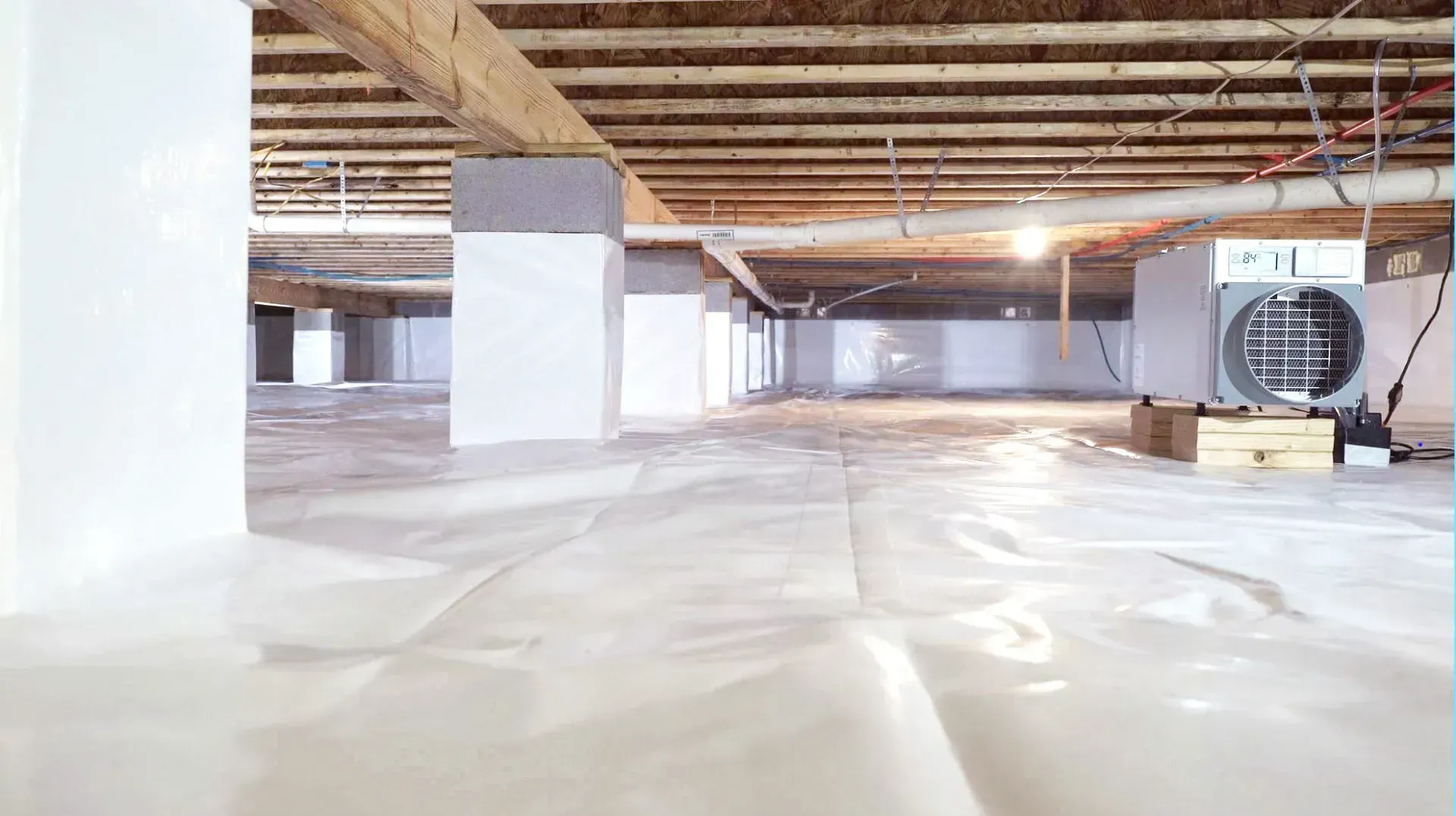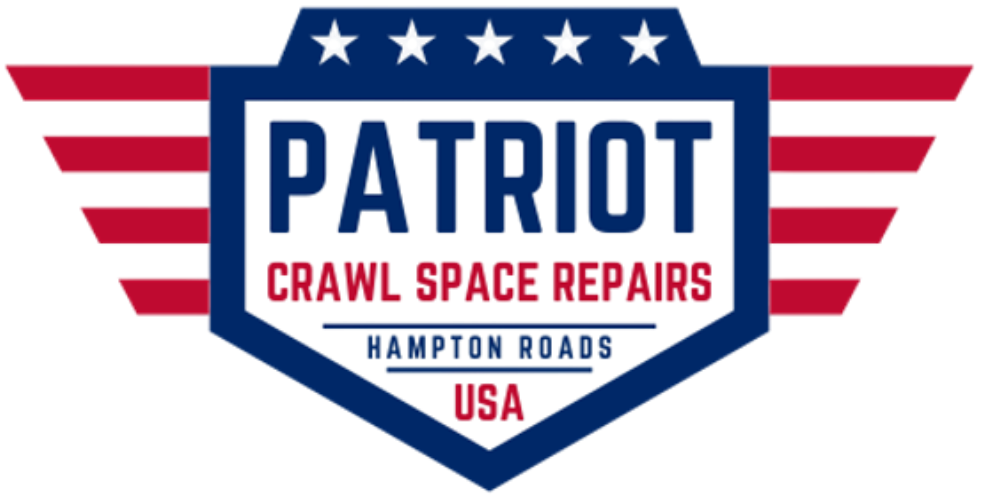The Crawl Space Blog
Expert information and advice on everything crawl space related.
Watch The Youtube Video
Are Full Crawl Space Liners A Waste Of Money?
The Answer Could Save You Thousands Of Dollars.

Why Full Crawl Space Liners Are Often a Waste of Money in Low-Clearance Crawl Spaces (and When They Actually Make Sense)
For years, homeowners have been told that “encapsulation” means wrapping every inch of your crawl space in thick white plastic. While that approach looks neat and tidy, it’s not always necessary — and in low-height crawl spaces, it can be a waste of money.
At Patriot Crawl Space Repairs, we’ve inspected and repaired thousands of crawl spaces throughout Hampton Roads. Here’s the truth we’ve learned from hands-on experience and solid building-science principles: Most crawl space moisture problems come from humid air — not from the ground beneath your home.
Understanding Where Crawl Space Moisture Really Comes From
Let’s unpack the three main moisture sources in a crawl space and what’s actually going on behind the scenes.
1. Airborne Humidity and Condensation (The Real Culprit)
When outdoor air flows into a vented crawl space, it carries moisture in the form of water vapor. That air may feel fine outside — say, 85°F and 70% humidity — but once it enters your crawl space, which might be around 68°F, the dew point is quickly reached.
When air cools to its dew point, the vapor condenses into liquid water on metal ducts, insulation, and wood framing. That’s what causes the “wet wood” smell, falling insulation, and mold you often see under a home. It’s not because of water wicking up from the dirt — it’s the air itself condensing.
When we seal off vents, doors, and penetrations, we stop that constant inflow of humid air that feeds the problem.
2. Groundwater Intrusion (A Drainage Problem, Not a Vapor Problem)
If you see puddles, mud, or standing water after rain, that’s groundwater — not vapor diffusion. It’s caused by poor yard drainage, clogged downspouts, or a high local water table.
The proper fix is a perimeter drain and sump pump system to move that water out before it evaporates. No liner in the world can hold back hydrostatic pressure; it just hides it.
3. Soil Vapor Diffusion (A Small but Manageable Source)
Moisture vapor can slowly move upward through bare soil, but the rate is surprisingly low — about 5–10 pints per day in a typical crawl space without a barrier. Once you place a 10-mil vapor barrier on the ground, that diffusion drops by over 95%. That’s why, in most low-height crawl spaces, simply covering the soil is plenty. You don’t need to wrap every wall and pier unless the space is unusually damp or tall enough to use for storage.
Why We Don’t Recommend Full Liners in Tight Crawl Spaces
In crawl spaces under about 24 inches of clearance, installing a full liner system is often unnecessary and counterproductive:
• Limited Air Volume — Tight spaces have less air, so humidity can be controlled easily with one dehumidifier.
• Poor Accessibility — Full liners make it hard to service plumbing, ducts, or wiring later.
• Trapped Air & Moisture — If walls aren’t perfectly sealed, a full liner can trap condensation behind it.
• Cost vs. Benefit — You pay thousands for materials that provide little additional performance once the vents are sealed and humidity is controlled.
Our approach focuses on air control and smart moisture management, not overselling plastic.
Our Proven Crawl Space System for Low-Height Spaces
At Patriot Crawl Space Repairs, our goal is long-term stability and healthy air quality — not just a good photo for marketing. Here’s what works best in the 757 climate zone (hot, humid summers and mild winters):
- Seal all vents, doors, and access holes to stop humid air.
- Install a quality dehumidifier with a drain line or pump to maintain 45–55% humidity.
- Lay a 10-mil ground vapor barrier to block ground vapor. No need for full wall wrap.
- Add a drainage and sump system only if groundwater is present.
This setup costs far less than a full encapsulation and, in most low spaces, performs just as well — if not better — in terms of wood protection and humidity stability.
When Full Liners Do Make Sense
Now, we’re not anti-liner. In fact, we like full liners — when they’re installed in the right type of crawl space.
Full encapsulation is a smart investment in:
• Tall crawl spaces (30 inches or more) where you can move around easily
• Homes where the crawl space is used for storage or maintenance access
• Clean, finished projects where the owner wants a bright, “mechanical room” feel
• Spaces with block walls that absorb lateral moisture
In these cases, wrapping the walls and sealing seams adds real value — it’s about cleanliness, aesthetics, and long-term durability.
But for low, tight spaces that no one will ever enter again, it’s simply not worth the cost.
The Science-First, Common-Sense Way to Keep Crawl Spaces Dry
Here’s the key takeaway:
• Moisture from the air causes condensation — solved by sealing and dehumidifying.
• Moisture from the ground is minor — solved with a 10-mil vapor sheet.
• Groundwater requires drainage — not more plastic.
When you treat the actual causes instead of covering everything in liner, you get a crawl space that’s drier, easier to service, and far more affordable to maintain.
Our Philosophy: Fix the Source, Not the Symptoms
At Patriot Crawl Space Repairs, we don’t push “one-size-fits-all” encapsulations. We design systems that make sense for each home — whether that’s a partial liner, full wrap, or drainage and dehumidification combo.
We believe in:
• Science over sales tactics
• Performance over appearance
• Customer trust over upsells
We’ll show you what’s really going on under your home — and how to fix it the right way.
Ready to Get the Honest Crawl Space Evaluation You Deserve?
Call Patriot Crawl Space Repairs today or visit patriotcrawlspacerepairs.com.
We’ll inspect your crawl space, explain exactly where your moisture is coming from, and give you the science-based plan that keeps your home healthy — without unnecessary costs.



